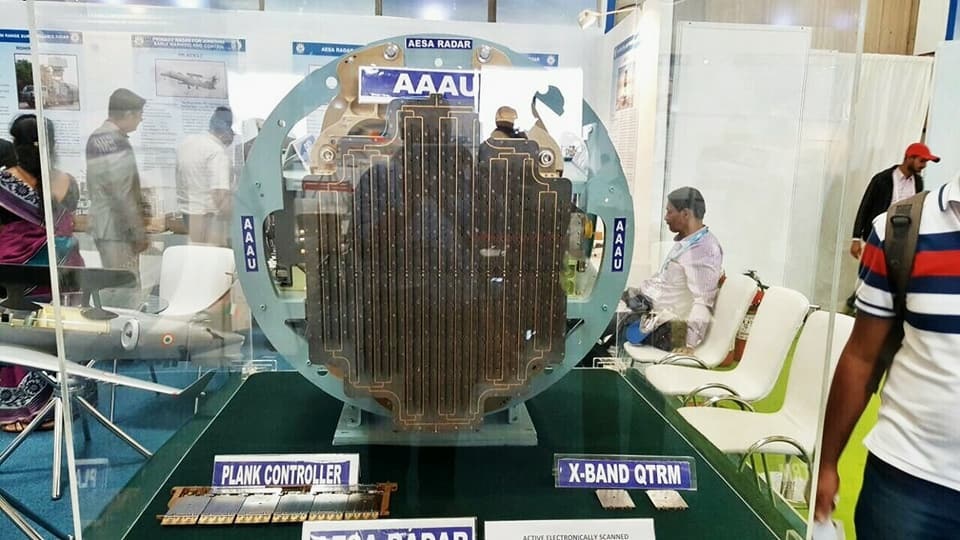BEL Finalizes Enhanced Uttam AESA Radar for Tejas Mk1A

India's push for advanced, indigenous defense technology took a significant leap forward with Bharat Electronics Limited (BEL) confirming the final configuration of the Uttam Active Electronically Scanned Array (AESA) radar for the Tejas Mk1A. This radar, developed by the Defence Research and Development Organisation (DRDO), marks a milestone in India’s self-reliance initiative and is set to significantly upgrade the operational capabilities of the Tejas Mk1A starting from the 51st aircraft.
The finalized configuration showcases an important evolution in the radar’s design, most notably by increasing its transmitter-receiver (TR) modules from 720 to over 980. TR modules are the heart of AESA radar technology, enabling advanced functions like detecting, tracking, and engaging multiple targets across a broad range. By increasing the module count, the Uttam radar will provide the Tejas Mk1A with better target detection ranges, resolution, and a superior ability to operate in dense electromagnetic environments.
Enhanced Range, Resolution, and Tracking Capabilities
The increase in TR modules directly translates to better radar range and resolution, offering the pilot improved situational awareness. This allows for more detailed imaging of potential threats and better tracking of multiple targets in real-time. For modern combat scenarios, this enhancement is a major boon, as radar accuracy can be decisive. Additionally, the improved configuration enables the Uttam radar to perform well in dense electronic environments, where other signals and radar waves are actively competing.
Moreover, this version of the Uttam AESA radar is equipped with a higher scanning rate, which provides quicker updates on target positions, a critical feature in fast-evolving combat zones. Its increased tracking sensitivity means the radar can prioritize and track multiple targets simultaneously, an essential requirement for fourth- and fifth-generation aircraft.
Fabrication and Testing: From Design to Deployment
With the final configuration set, BEL has already begun fabricating the Uttam AESA Fire Control Radar (FCR) for the Tejas Mk1A. This variant has been rigorously tested to ensure seamless integration with the aircraft's systems, allowing the radar to fully leverage the avionics suite of the Mk1A. The successful development and testing process marks a step toward reducing dependency on imported radar systems, an achievement in line with India’s “Make in India” initiative.
Beyond its advanced operational performance, the Uttam radar is designed with a modular architecture, which makes it inherently adaptable to future upgrades or modifications. The radar can be reconfigured with ease as new technology becomes available or mission requirements evolve, ensuring long-term operational relevance. Maintenance requirements will also be lower, making it simpler and more cost-effective to operate over its lifespan, especially as technicians in India will be able to service and modify the radar without relying on foreign support.
Strategic Impact and Future Deployments
Starting from the 51st aircraft, the Uttam AESA radar will become standard in Tejas Mk1A, providing the Indian Air Force (IAF) with a sophisticated indigenous radar system that greatly enhances mission capabilities. The radar’s architecture also makes it adaptable to a range of future applications, including drones, helicopters, and even land-based platforms, should such requirements arise.
This technology will also extend to the Tejas MkII, a more advanced fighter variant that India plans to introduce in the near future. The MkII, which aims to replace aging aircraft in the IAF fleet, will benefit from an enhanced version of the Uttam radar tailored for its specifications. By equipping both Mk1A and MkII with this cutting-edge radar, India is bolstering its position as a defense manufacturer capable of producing state-of-the-art systems across multiple platforms.
A Catalyst for India’s Self-Reliance in Defense
Beyond operational gains, the Uttam AESA radar exemplifies the progress India has made in defense manufacturing. With its successful integration, India will reduce its dependence on foreign radars and foster greater control over its critical military technology. This self-reliant approach not only strengthens national security but also has economic advantages, creating a domestic ecosystem that can support high-tech jobs and drive further innovation in the field.
As BEL and DRDO continue to refine and deploy the Uttam AESA radar, this development serves as a promising example of how indigenous technology can meet and exceed the demands of modern warfare, providing India with a strategic edge in its defense capabilities.


